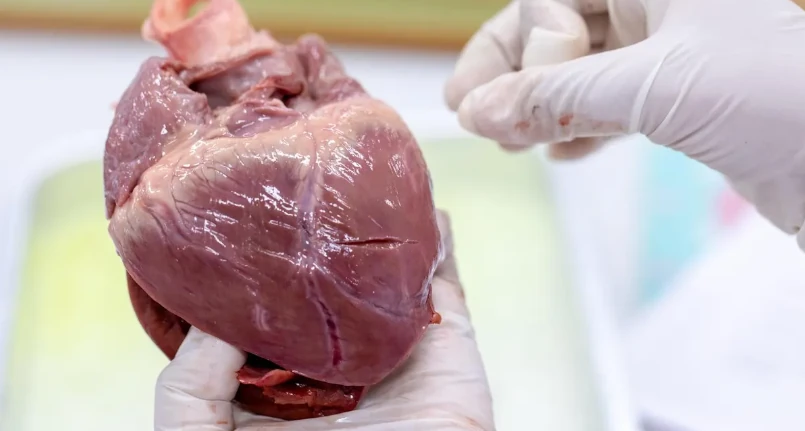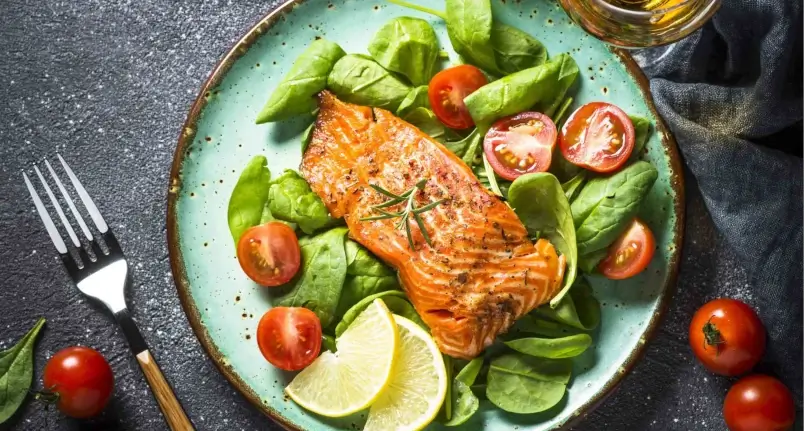Things
What is pork heart?
The heart of the pig – pork , wild boar – is a food of animal origin which falls within the set of the fifth quarter. It is an offal with chemical and physical characteristics almost identical to those of muscle tissue .
In Italy, pork heart is a fairly widespread food even if, as is the case throughout the fifth quarter, the population eats less and less of it. This depends not only on a reduction in demand, but also on the commercial offer. Note : together with chicken heart, pork heart is probably the most consumed food in our area.
Cooking pork heart is not easy. First of all, it is necessary to carefully clean it, eliminating the excess fibrillar connective tissue. Then you have to pay attention to the strictly transversal cut, which must not be too thick but not too thin either. This cut can be cooked in two totally opposite ways: quickly sautéing it in a pan over medium heat or stewing it in a pan.
Nutritional properties
Nutritional properties of pork heart
Pork heart belongs to the first fundamental group of foods.
It is more nutritious and less fat than the average musculoskeletal meat; contains a few more calories than lean meats like chicken breast . Energy is mainly supplied by proteins , followed by lipids and traces of carbohydrates . Pig heart peptides have a high biological value , i.e. they contain all the essential amino acids in the right quantities and proportions with respect to the human protein model; the main amino acids are: glutamic acid , leucine ,lysine and aspartic acid. Fatty acids have a prevalence of unsaturated chains compared to saturated ones; the ratio between polyunsaturated fats – essential seeds of the omega 6 and omega 3 group – and saturated fats is approximately 1:1. Carbohydrates, contained in almost negligible quantities, are of the soluble type ( glucose ).
The pork heart does not contain dietary fibers ; it is instead rich in cholesterol and purines. There are not even traces of lactose , gluten and histamine .
With regard to mineral salts , pork heart contains high levels of phosphorus and very interesting quantities of heme iron – highly bioavailable . There is no shortage of discrete concentrations of zinc and potassium .
Also in terms of vitamin supplies, pork heart does not disappoint. An abundant portion is able to cover the entire requirement of riboflavin (vit. B2), and almost all of thiamin ( vit. B1 ) and niacin (vit. PP); the concentration of pyridoxine and cobalamin is also good. However, considerable levels of vitamin C – ascorbic acid – and any fat-soluble vitamin are not appreciated .
Hygienic aspects of pork heart
The pig heart is quite similar to the skeletal muscle and therefore tends to accumulate fewer unwanted substances – antibiotics , hormones , dioxins , heavy metals , etc. – with respect to the organs of metabolism, filtering and all those containing high percentages of fat – liver , kidneys ( kidneys ), brain , bone marrow, etc.
| Pig heart | |
| Edible part | 100.0% |
| Waterfall | 72.0g |
| Protein | 18.3g |
| Lipids | 9.4g |
| Saturated Fatty Acids | – g |
| Monounsaturated fatty acids | – g |
| Polyunsaturated fatty acids | – g |
| Cholesterol | – mg |
| TOTAL Carbohydrates | 0.4g |
| Starch / Glycogen | 0.0g |
| Soluble sugars | 0.4g |
| Dietary Fiber | 0.0g |
| Power | 159.0 kcal |
| Sodium | 80.0 mg |
| Potassium | 300.0 mg |
| Iron | 5.3 mg |
| Soccer | 35.0 mg |
| Phosphorus | 245.0mg |
| Thiamine or vitamin B1 | 0.40 mg |
| Riboflavin or vitamin B2 | 1.27 mg |
| Niacin or vitamin PP | 6.10 mg |
| Vitamin A or RAE | 9.0µg |
| Vitamin C or Ascorbic Acid | 5.0 mg |
| Vitamin E or Alpha Tocopherol | – mg |
Diet
Pork heart in the diet
Pig heart is a food which, due to its modest caloric intake and low concentration of fatty acids , lends itself to slimming diets – low in calories and with normolipids.
Nonetheless, this food is not entirely recommended in case of metabolic pathologies, especially as regards hypercholesterolemia . This does not depend on the fatty acid ratio, as much as on the cholesterol level; an average portion of pig heart provides 50% of the recommended daily cholesterol ration and as much as 2/3 of that suggested in the presence of hypercholesterolemia.
Pork heart, like the rest of the meat, milk and derivatives, fishery products and eggs , is an excellent nutritional source of essential amino acids. This feature can be very useful in case of increased individual needs, for example: pregnancy and breastfeeding , growth , extremely intense and/or prolonged sports practice, old age – due to eating disorder and tendency to malabsorption – malabsorption, recovery from specific or generalized malnutrition and defedation.
Pork heart is among the best nutritional sources of iron. Regularly including it in the diet undoubtedly facilitates the coverage of specific nutritional needs, especially high in fertile women, even more so if pregnant, and in conditions of iron deficiency anemia .
It also helps to increase the intake of phosphorus, necessary for the structuring of bones and of phospholipids – contained in cell membranes and nervous tissue – potassium, alkalizing and necessary for the functioning of the membrane potential – lost in abundance with perspiration , with urine and possibly with diarrhea – and zinc – antioxidant and enzymatic constituent of great importance.
The pig’s heart is very rich in group B vitamins , coenzymatic factors of great importance in cellular processes; it therefore constitutes an excellent nutritional source to support the correct functioning of all tissues.
Due to the high content of purines, it is instead inadvisable in the diet of the hyperuricaemic and above all in the presence of gouty attacks , as well as for those who tend towards kidney stones / lithiasis of uric acid . It has no contraindications for lactose intolerance , celiac disease and histamine intolerance .
Pork heart does not have excellent digestibility. Especially compared to egg whites , low-fat cottage cheese , lean fish and lean white meats , it stays in the stomach longer. Portions that are too large, especially in the evening meal, are therefore inadequate in the diet against dyspepsia , hypochlorhydria , gastritis , peptic ulcers and gastroesophageal reflux disease . Furthermore, being rather “tenacious” to chew, it is not suitable for the nutritional regimen of those with teethimpaired or uses removable dentures.
Pork heart is not allowed in vegetarian , vegan , Hindu and Buddhist diets. It does not appear to have specific contraindications for Jews and Muslims.
The average heart portion is 100-150 g (about 160-240 kcal ).
Kitchen
Heart of pork in the kitchen
Heart is a rather difficult food to cook. Regardless of taste , cardiac muscle tissue is very dense and compact. Furthermore, the organ is very rich in loose fibrillar connective tissue – peri and endocardium, heart valves , origin of the great vessels – very resistant even to prolonged cooking .
Cooking the pork heart incorrectly can make it “chewy”. This occurs mainly due to the contraction of some collagen fibers which tend to stiffen by “squeezing” the tissue and causing it to lose a lot of water. The drawback could be solved in two ways: by applying an adequate temperature (medium) and shortening the cooking times – quick sautéing in the pan – or by prolonging the heat treatment a lot – even low flame, with stewing in a saucepan. However, this doesn’t solve the problem of the connective tissue lining the muscles and chambers of the heart; it is therefore always necessary to start with an accurate cleaning of the food, trimming the muscle tissue as much as possible and eliminating the connective tissue pannicles.
The processing of pork heart could be summarized as follows:
- External husking of the food, elimination of blood vessels and eventual removal of the covering connective tissue;
- Slicing into thin steaks and absolutely TRANSVERSAL with respect to the direction of the fibers ; avoid longitudinal cutting;
- Husking of the slices, trimming the cavities from the removable connective tissue;
- Stir-fry in a hot but not hot pan, fast, based on oil or butter; avoid adding salt during cooking to reduce dehydration of the meat . Alternatively, in a saucepan, brown in hot oil or butter , deglaze with wine and continue cooking over low heat for a couple of hours, adding broth and other ingredients as desired; in this case, salt can be added during cooking.
Among the most common recipes based on pork heart we mention: homemade heart – with tomato – heart stew and mushrooms, heart carpaccio marinated in a pan, heart escalopes, etc.




